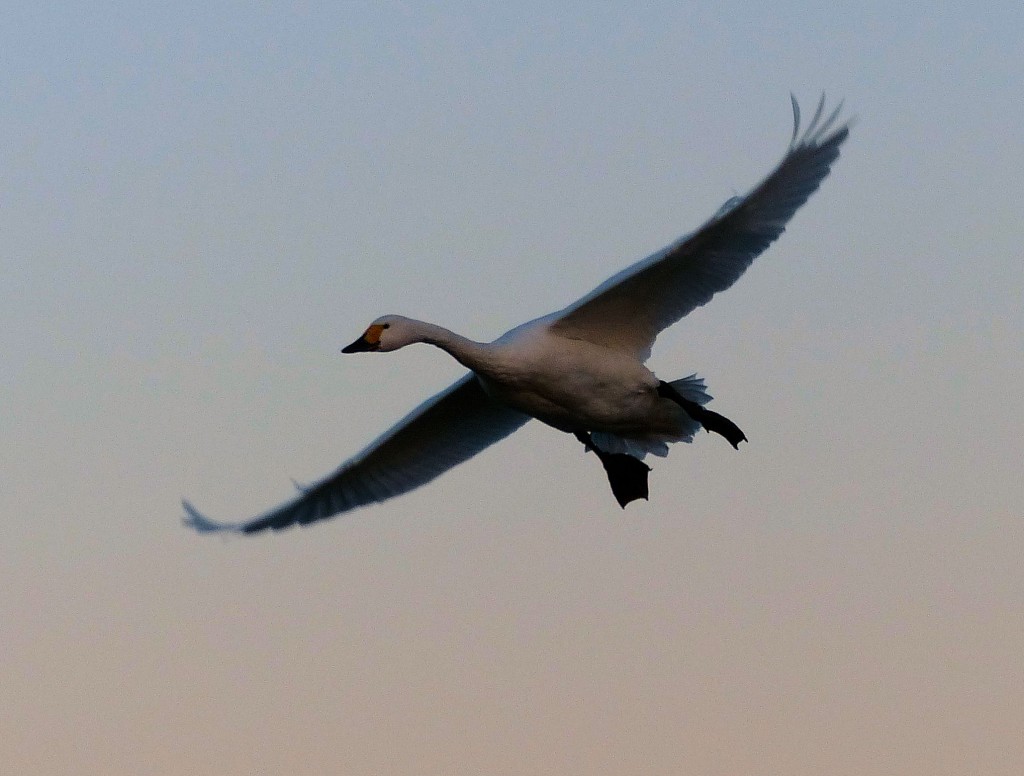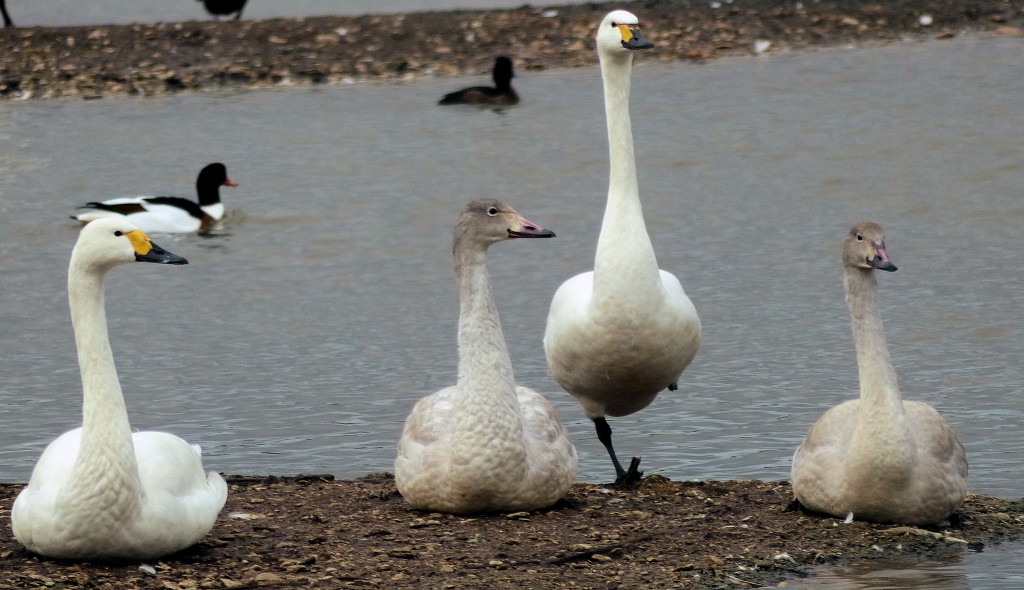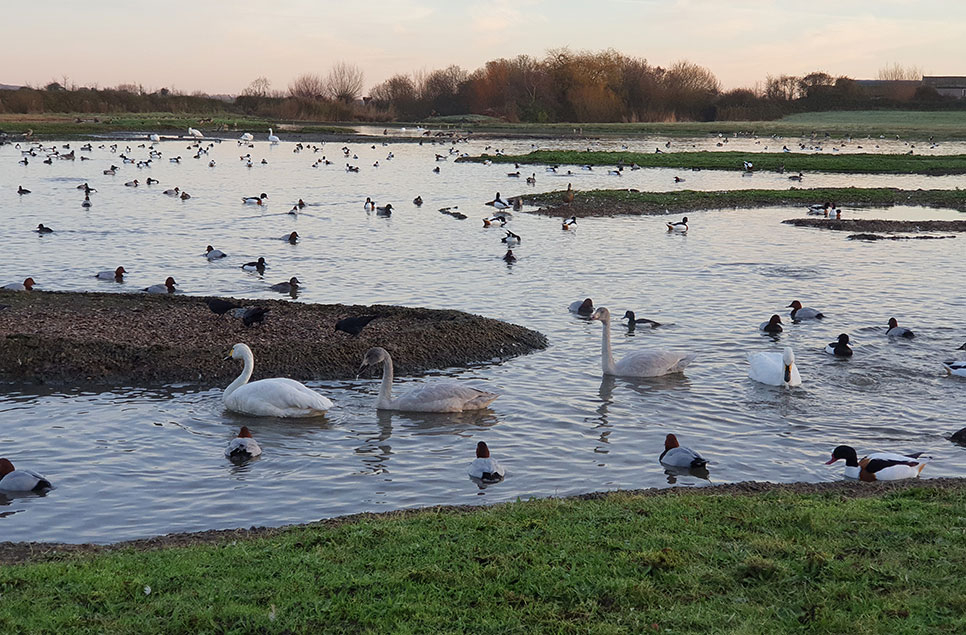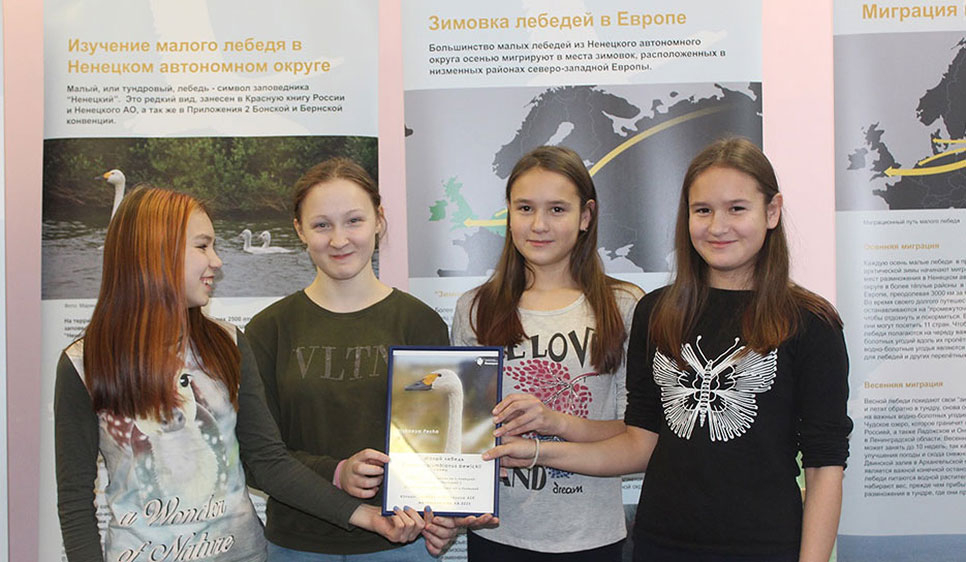Please note: water will be off in Welly Boot Land today (2 May), the play area will be open as usual. The Canoe Safari is also closed due to weather.
Close alertBack to the breeding grounds

The Bewick’s swans are on the move again! Over the last few days the birds have begun to undertake the long journey to their breeding grounds on the tundra in the far north of Russia, where they will arrive in May. Whilst we’re always sad to see the swans go, we’re already looking forward to this autumn, when we’ll welcome back many familiar faces along with a new generation of swans. Here at the WWT, since the 1960s we’ve been monitoring the numbers of young swans (known as ‘cygnets’, after the Latin word for ‘swan’) that arrive with their parents in the UK each winter. That valuable information has allowed us to better understand what factors make a good or bad breeding year for the swans. Sadly, the number of Bewick’s swans wintering in northwest Europe has fallen steadily from around 29,000 in 1995 to less than 18,000 today. So our need to understand the swans and their life cycle has never been greater.
As part of the WWT’s Hope for Swans project, we set out to discover whether the decline in the Bewick’s swan population could be due to fewer cygnets being reared. The Arctic tundra of Russia where the Bewick’s swans breed has seen many changes since the WWT and it’s founder, Sir Peter Scott, first began studying the Bewick’s swan. Changes in Arctic weather, predators such as Arctic foxes and skuas, human developments linked to oil and gas, hunting, and a multitude of other factors have been suggested as possible issues that the breeding swans must overcome. With our colleagues at the Netherlands Institute for Ecology we used the WWT's long-term data on the numbers of cygnets that arrive on the wintering grounds around our centres across the UK to assess (i) whether breeding success had changed over time, and (ii) what factors influenced breeding success.

In our study, which has been published recently in the Journal of Avian Biology, we found no evidence that breeding success had changed over time, but it did vary considerably between years. Between the winters of 1964/65 and 2014/15 an average of 15% of the Bewick’s swans seen were cygnets, with an average number of 2 cygnets per family. However, the percentage of the population that were cygnets varied between 3% in the worst years to 30% in the very best years. Despite the ongoing decrease in population size, the swan’s breeding success hasn’t shown the decline that many of us were expecting.
We found that more Bewick's Swan cygnets arrived in the UK in years where the average summer temperatures on the Arctic breeding grounds were higher. Warmer weather improves the conditions for breeding swans, as harsh cold can freeze eggs and cygnets, and force tired, hungry adults to abandon their nests in search of food. The warmer weather also improves the growth of vegetation in the Arctic, meaning more food for the growing cygnets.
We also found that more cygnets arrive in the UK in years in which fewer Arctic foxes were seen on the Russian breeding grounds. This was perhaps unsurprising, as Arctic foxes are a key predator of many birds in the Arctic and are known to eat eggs and cygnets, although a healthy adult swan themselves can usually fight off a fox. Bird predators such as skuas and buzzards didn't appear to have any effect on swan breeding success.
We also found that the fewer swans there were in the population, the better the remaining swans bred, a pattern which scientists call ‘density-dependence’ (because swan breeding success depends on the density of swans in the breeding area). We see this pattern because too many swans leads to strong competition for food and nesting sites. This can lead to poorer breeding success as the swans 'get in each other's way'. Finally, we also found that breeding success was better in years when there were more 'experienced' pairs in the population. By this, we mean that birds that had been paired together for longer tended to arrive in the UK with more cygnets per winter. For the Bewick’s swan, which has a long, hazardous migration and only a short time to breed before the Arctic winter arrives, gaining experience of co-operating with a partner really pays off. Our study has given us a much better idea of what makes ‘good’ and ‘bad’ breeding conditions for the swans.
Our research suggests that there has been no sudden drop in cygnet numbers that could explain the worrying population decline in the Bewick’s swan. So whilst the Bewick’s swans may be leaving Slimbridge and our other centres for now, we’ll be busy with the rest of our Hope for Swans project. At the WWT we’ll be working with other researchers across the Bewick’s swan flyway to understand the factors that influence how many Bewick’s swans survive each year, and to identify the threats that the swans face. The exciting Flight of the Swans project this autumn will bring together people from across the Bewick’s swan flyway to discuss the issues that these swans face, and how we can tackle them.
You can keep up to date with the very latest information on all of the WWT’s conservation work by following us on Twitter.
Kevin Wood, Eileen Rees, Geoff Hilton & Julia Newth


